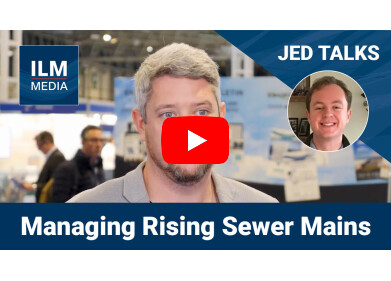Water Pollution Monitoring
New technology for final effluent monitoring
May 12 2010
Engineers at Intellitect Water have developed a version of the company’s innovative multiparameter water quality monitoring sonde, the ’Intellisonde FE™’ which brings the advantages of online monitoring to a much larger proportion of wastewater treatment plants.
The Intellisonde FE™ is located in a flow-though chamber which is fed by a submerged sampling pump located in a sump. A level gauge ensures that the sump does not pump dry.
Inside the sonde head, tiny solid-state sensors continuously monitor conductivity, pH, temperature, turbidity and ammonium. The unit can log at intervals between one minute and one hour on all parameters simultaneously and recorded on an internal datalogger, however data is transmitted via GPRS to a dedicated server which feeds a web site to enable 24/7 access to (almost) live water quality information.
The graph shows recorded data during February and March 2010 and Mike reports that no calibration or maintenance was necessary during this period. It can be seen that rainfall/stormwater events have a significant effect on temperature and conductivity.
Intellitect Water’s Technical Director David Vincent, believes that recent changes in monitoring requirements will greatly enhance the demand for the new Intellisonde FE™. He explains, "The Environment Agency (EA) is currently engaged upon a programme of passing the responsibility for collecting, analysing and reporting discharge quality to operators. At the same time, the level of monitoring required will depend on the level of pollution risk that each discharge represents. Consequently operators, such as the water industry and the process industries, will have to develop a monitoring strategy that meets the requirements of the EA."
Occasional sampling and analysis can be lower in cost than online monitoring. However, the main disadvantages are that a pollution incident could go undetected between sampling times and infrequent data does not support process optimisation. In contrast, David says, "The Intellisonde FE™ will provide continuous access to effluent quality data and thereby help to raise compliance levels even further."
The Intellisonde FE™ will also provide major financial advantages. It is priced for volume deployment, significantly below traditional effluent monitoring systems, which means that it will become cost-effective for a much larger proportion of works and will save the cost of sampler visits and analysis.
From a water company perspective, Mike Robinson says, "If we can prove that the lifetime costs are as low as they appear and if the unit continues to perform reliably, the lack of a requirement for chemicals coupled with a low maintenance requirement will mean that the Intellisonde FE™ could find application at a large number of treatment works."
For further information, visit www.intellitect-water.co.uk
Digital Edition
AET 28.4 Oct/Nov 2024
November 2024
Gas Detection - Go from lagging to leading: why investment in gas detection makes sense Air Monitoring - Swirl and vortex meters will aid green hydrogen production - Beyond the Stack: Emi...
View all digital editions
Events
Jan 12 2025 Abu Dhabi, UAE
Jan 14 2025 Abu Dhabi, UAE
Jan 20 2025 San Diego, CA, USA
Carrefour des Gestions Locales de L'eau
Jan 22 2025 Rennes, France
Safety, Health & Wellbeing LIVE
Jan 22 2025 Manchester, UK




-min.jpg)















